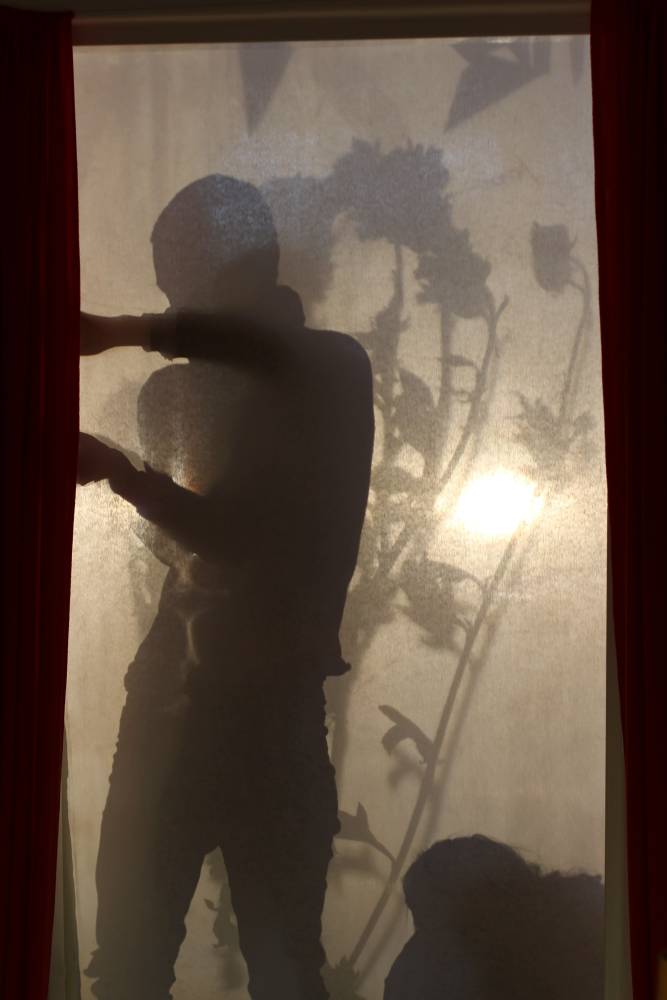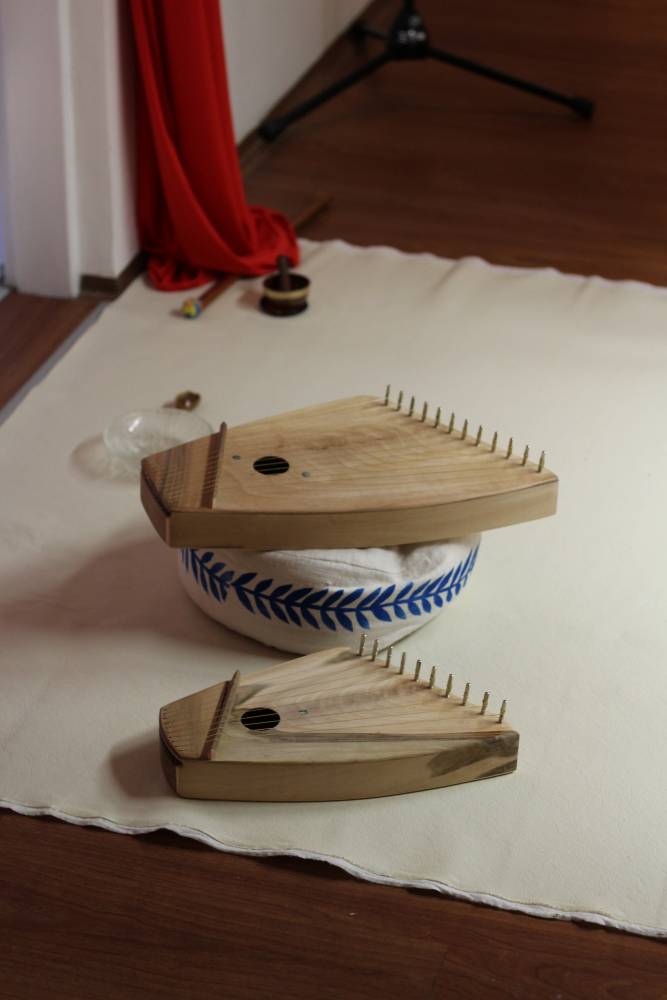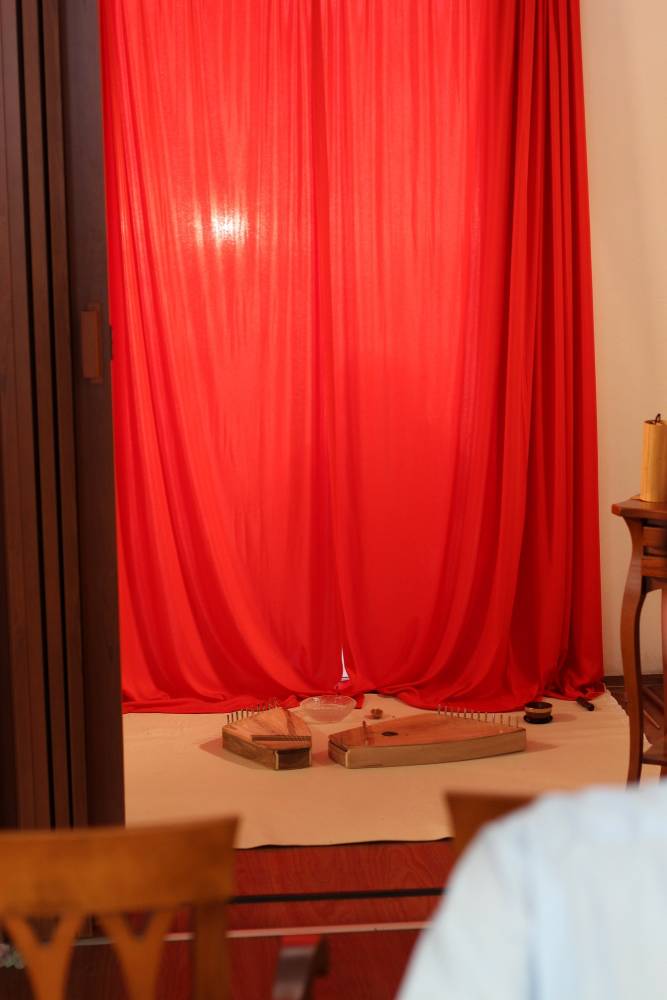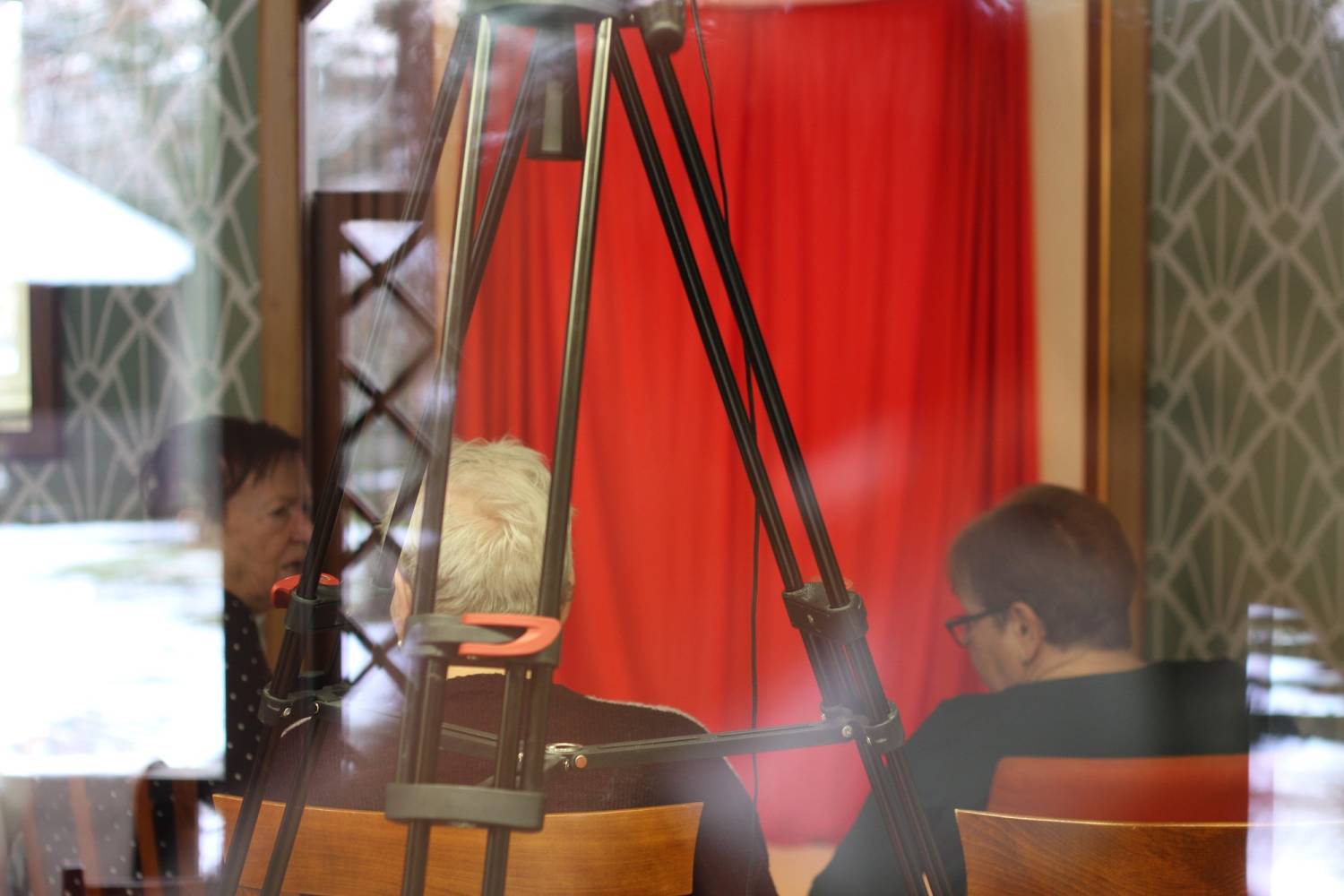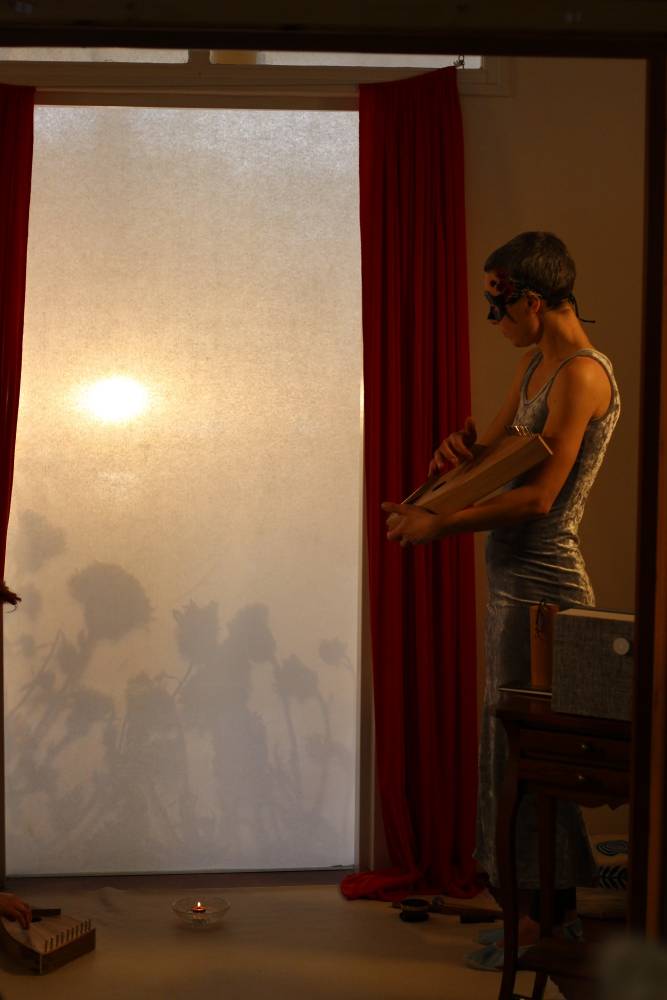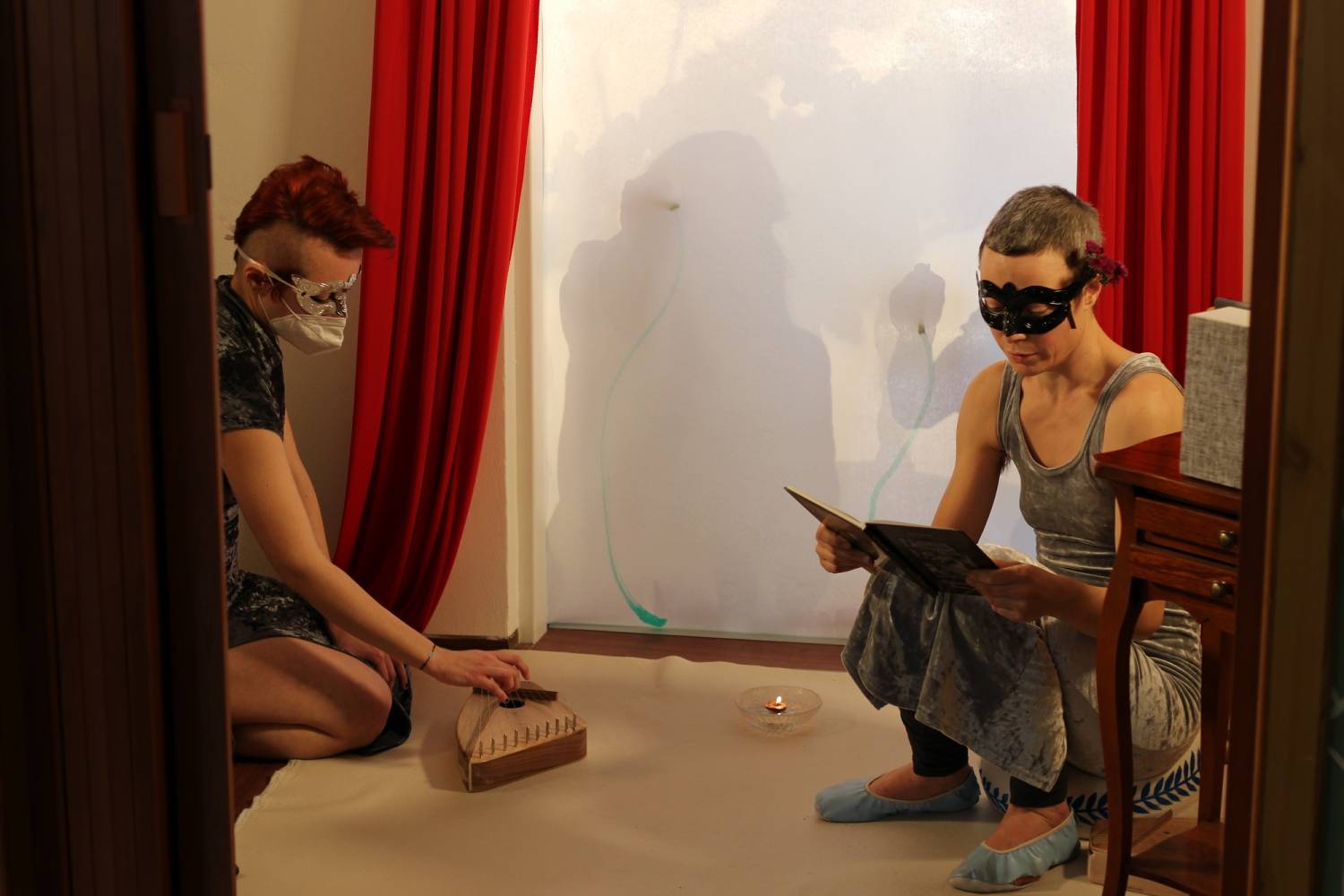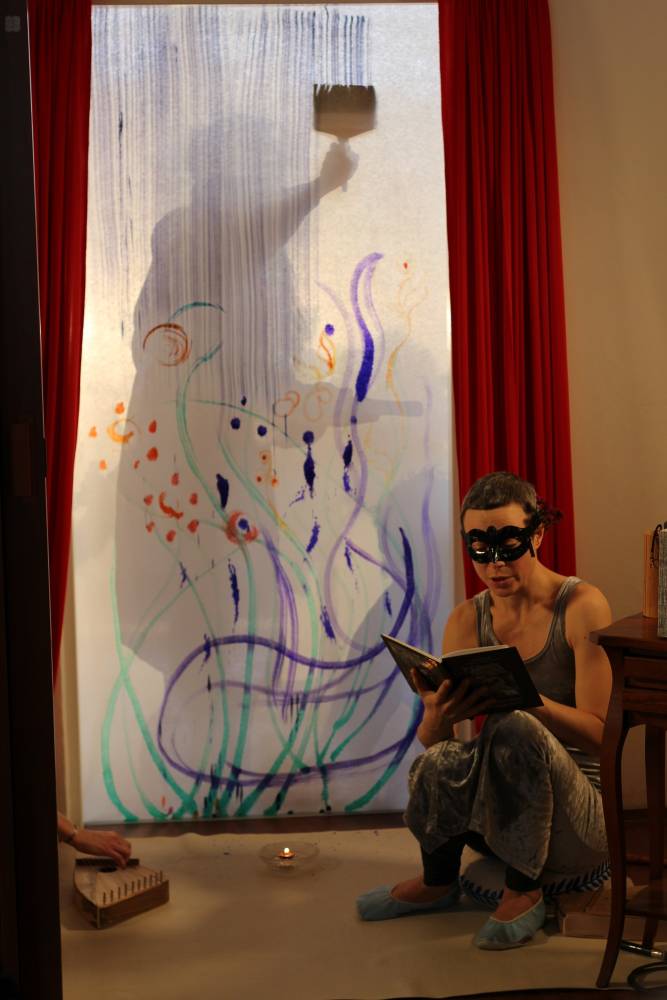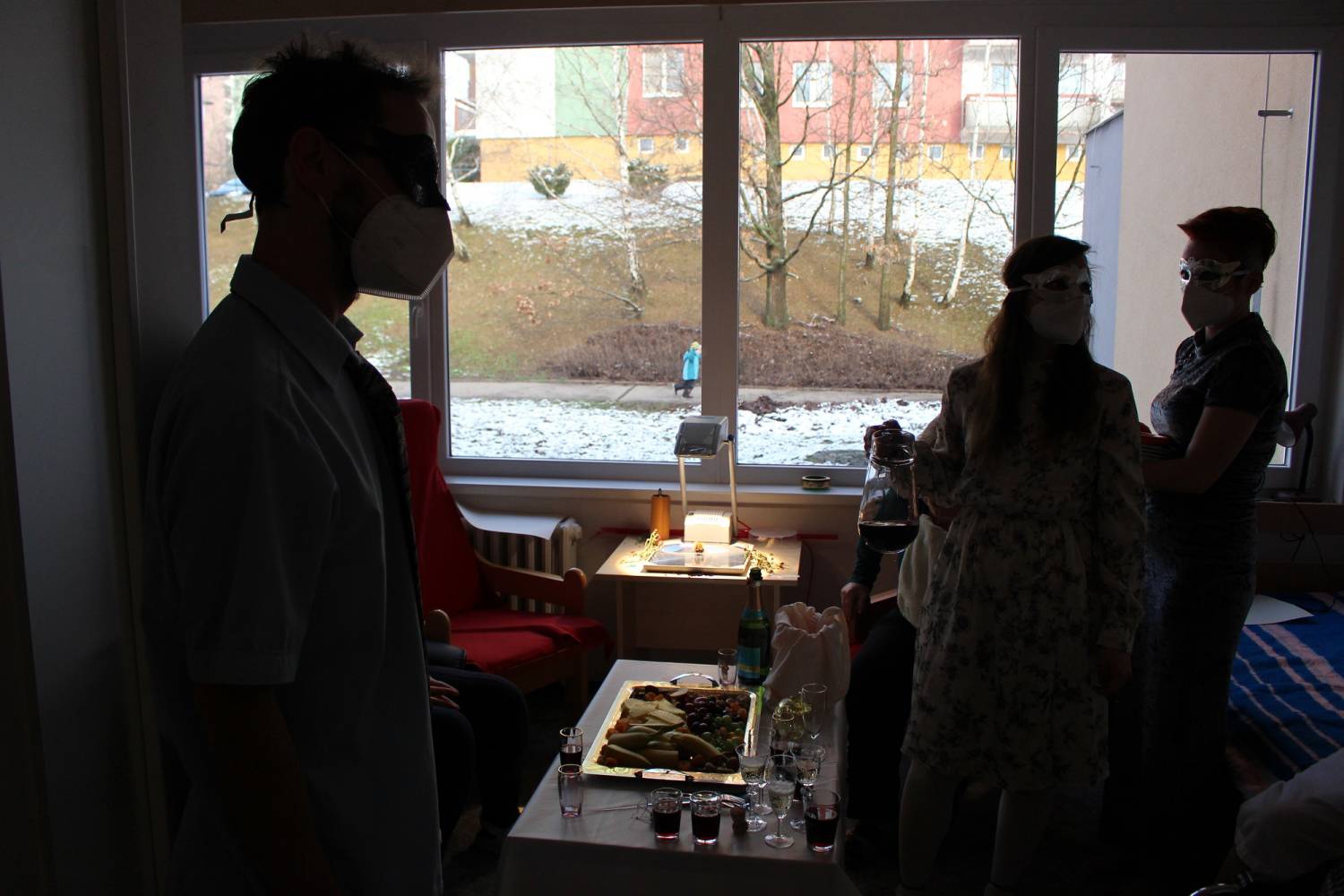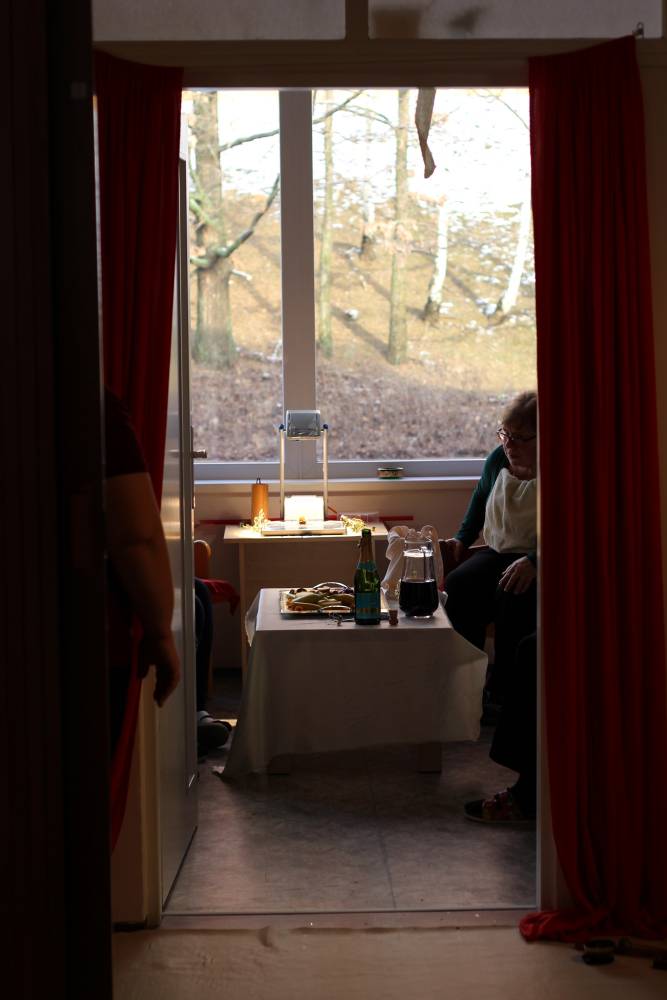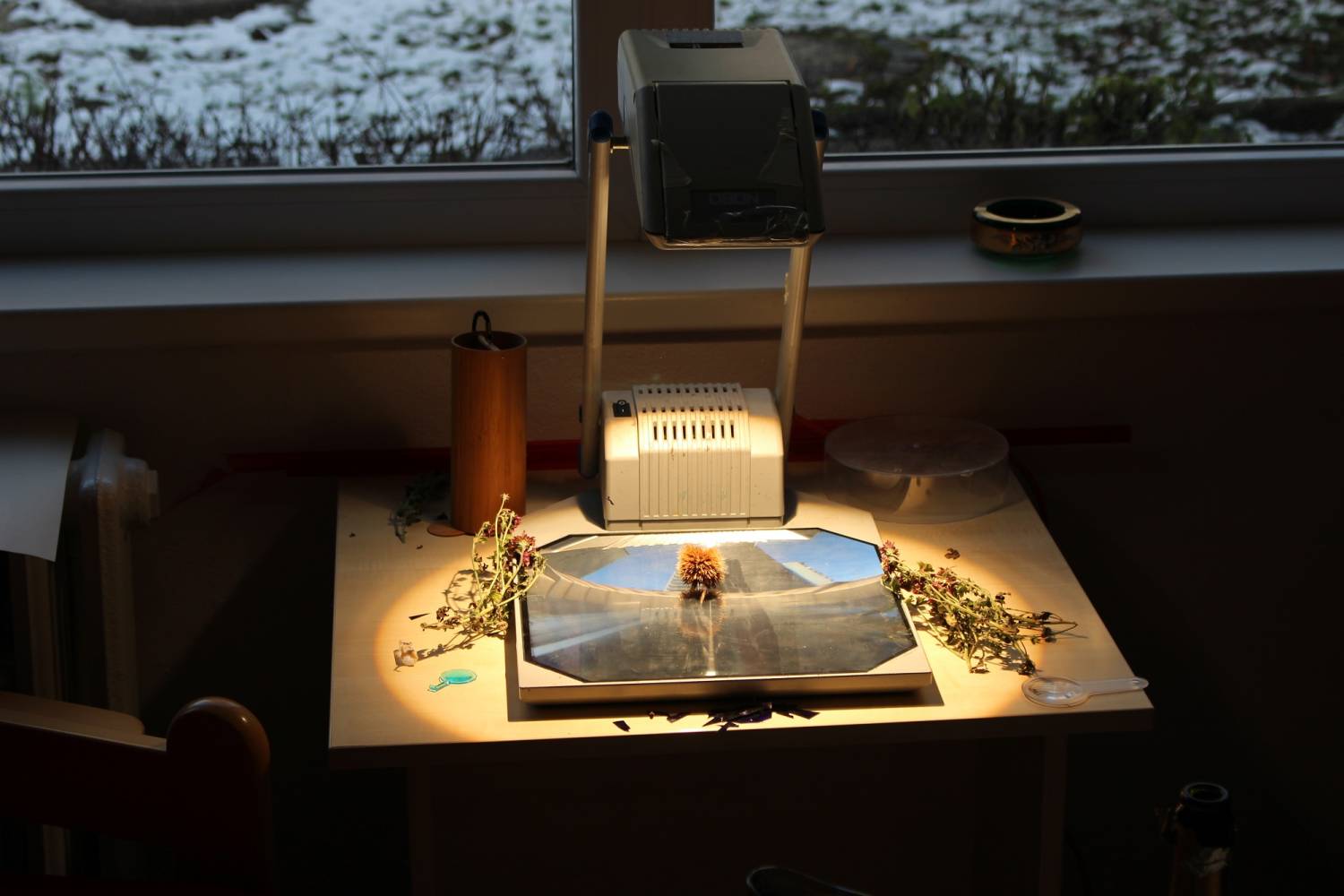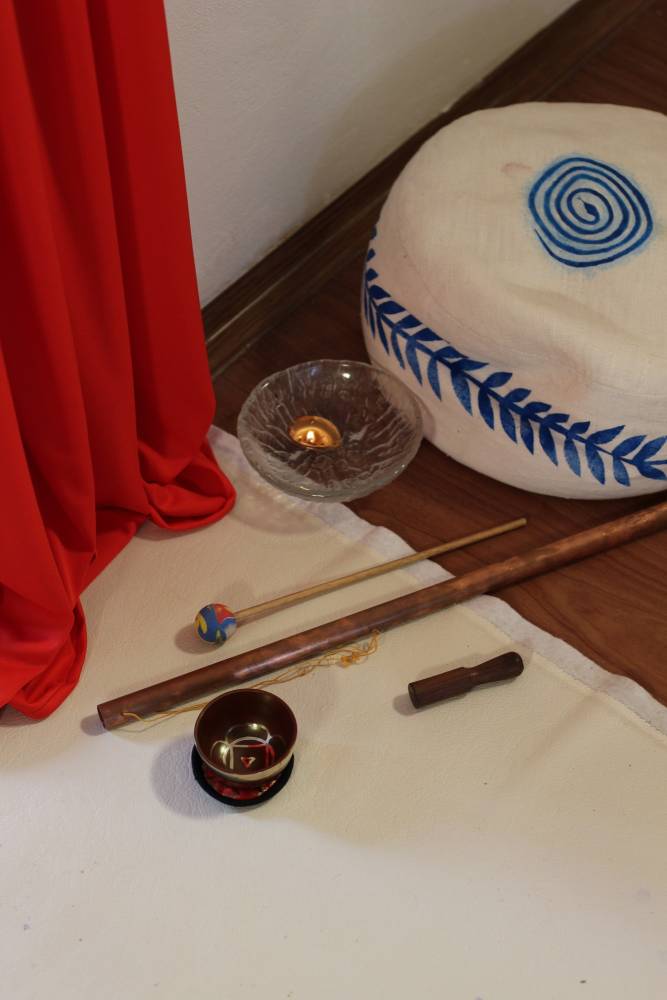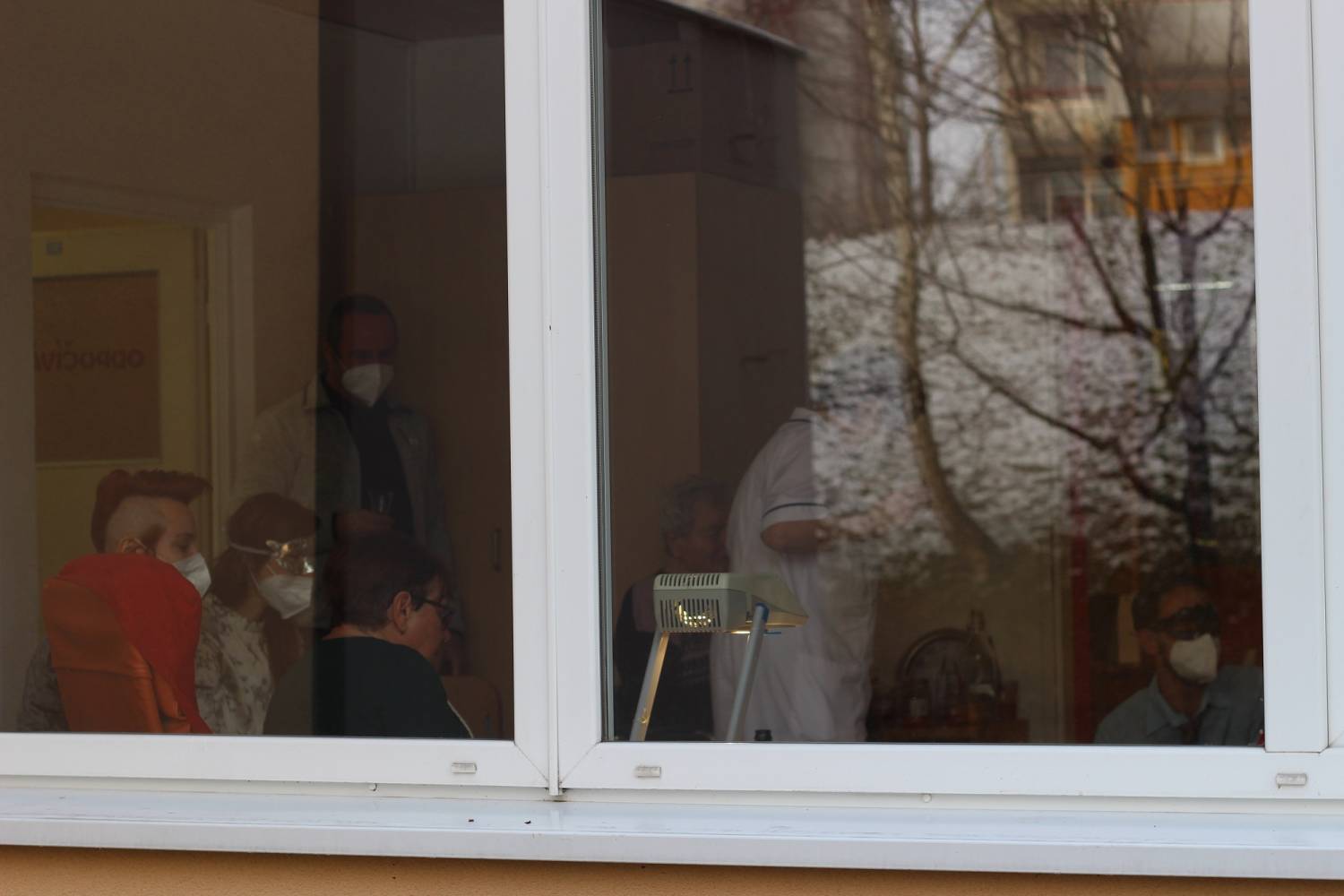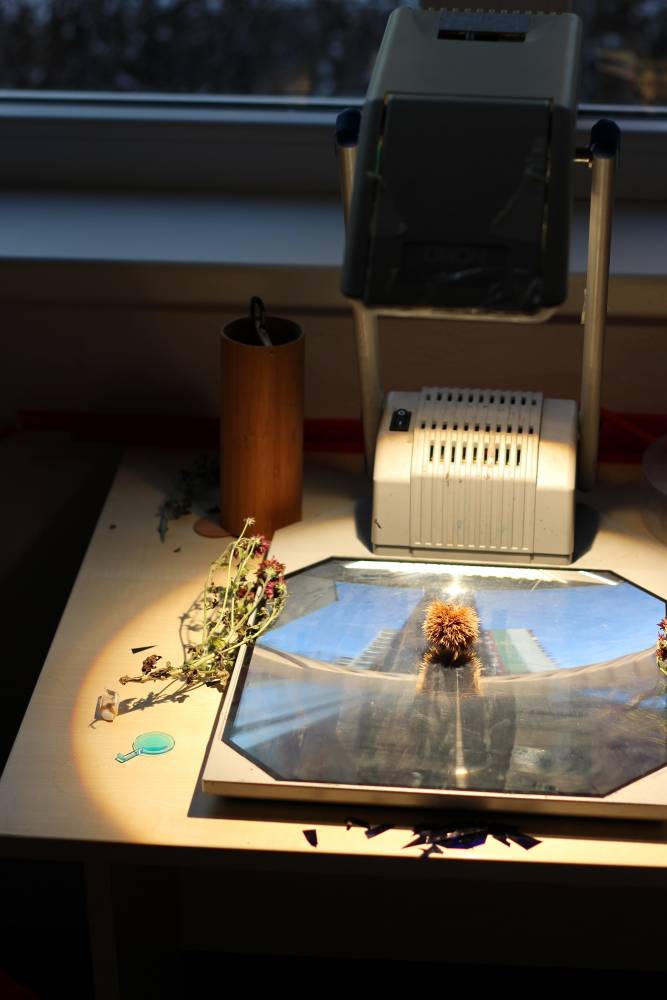Passing years, aging, illnesses, and death – the integral parts of life we often like to overlook. When the process of aging goes hand in hand with memory loss or dementia, a special care is required. There is no place for pity, what is needed is empathy, real help, patience and time. The project Dveře (Doors) opens up all of these locked chambers. It does so not only on a symbolic level, but it also offers practical ways to approach these issues. Doors are not only inanimate functional objects here. They serve as imaginary gates to the land of dreams.
Creaky noise, a door handle, and a lost key. A border between the private and the public. The first one I remember is a metal fence gate which led to the front garden. It was green with white beams and one year there was a tiny tree frog living in a hole dug for a fence post to be put in later on. Then, I remember a half glass door leading to our room at grandma’s where we’d lived for ten years. The glass panel had a floral relief. Then, there was the veneer door to the living room. One time I peeked through the keyhole and watched the Clash of the Titans. In kindergarten, we used to have a huge maroon leather door that looked like an accordion. In the backyard, there was a greenhouse with a particularly magical door with a rusty metal lock. The doors at school were so uniform that I don’t remember them at all. When we moved to our new house, my parents ordered massive brown front doors with door knobs to be made which looked as if they were made from hundreds of little doors. We have two of them – front and back – and they still look the same to this day. Inside the house, we had no doors and since then I always forget to close and lock the door. At the entrance of the house where I live now, there are big, old and again maroon wooden doors. They make a beautiful creaky noise and this sound has become the sound of home. The doors are like a musical instrument. I have removed almost all of the doors in my flat and I added French doors to the garden. I have a soft spot for fogged up glass doors.
Since the beginning, the project Dveře (Doors) has been literally and symbolically open to new and unusual solutions. Thanks to that, even an ordinary door could’ve become a site of inspiration for training one’s memory, sharing memories, and gathering together for celebration and initiation ceremony. During the lockdown in particular, which entails an absence of visitors and social events, the symbolic level of the project cannot be ignored. Dveře (Doors) were created in collaboration with artists Jan Sláma, Markéta Lisá and Pavla Maslejová. Jan Sláma graduated from the Faculty of Fine Arts in Brno and for a couple of years now he has been working as a coordinator and therapy instructor in a day care centre for elderly people Domov Naděje in Brno-Vinohrady where our project took place. The daily schedule of the care centre is adapted to the specific needs of their clients. The personnel comply with their wishes and treat each client individually. In our project we wanted to follow that approach.
When I asked Honza if there was something they, both the personnel and the clients, currently needed in the centre he told me they were going to build a new doorway between the lounge room and the day room. This little renovation should make the movement in the space more comfortable for the clients. Whenever they need to rest, they won’t have to wander about and look for the door behind the corner.
I was excited by this practical task and it also instantly reminded me of the door to Honza’s studio in the former Vlněna factory where he created an unforgettable environment that looked like a secret hideout with lots of mysterious shelves and cupboards. The only entrance to that space was a narrow doorway in the exact measurements of his figure. I will never forget that fascinating microspace and the special “door”. The studio doesn’t exist anymore and the owner kept only its torso. There is, however, a short documentary called Hranice mezi běžným a svátečním / Borders between ordinary and festive (8 min) which was filmed in collaboration with Pavlína Komoňová. This documentary is not only a portrait of the artist but it also documents the bygone historical building.
The title of the documentary gave me an idea of organizing a therapeutic initiation ceremony in the centre for the newly built door, the clients, and the personnel. Part of that ceremony would be a little celebration of the new door and the new year ahead. We would breathe life into an ordinary door which would become a space between reality and dreams, a border between ordinary and festive. We asked the clients to think of a door which was important in their life or which remained in their memory. Based on this memory exercise and the client’s drawings we chose specific types of doors.
I had a meeting with Honza and we were trying to come up with the format of the initiation ceremony for the new door. We were trying to find the imaginary key. Suddenly, I could hear the relaxing sound of kantele in my head – a string instrument which I heard during an art exhibition of Kateřina Zochová for the first time. In relation to that, I thought of Markéta Lisá, a musician who also plays the kantele. I asked her whether she’d like to collaborate on the project but I didn’t mention the kantele. I rather secretly hoped she might suggest it herself. Markéta liked the project as she’d been thinking about organising an event in a similar facility for quite a while. She wanted to do a reading which was also our plan. During our meeting, she mentioned she could also play some instrument. She thought she could play the kantele manufactured by Kateřina Zochová, which was my dream. Everything began falling into place. We decided to give this kantele to the centre after the event so that they can use it for music therapy. Then we discussed the story and the scene and Honza thought of the story from Ovid’s Metamorphoses in which an old couple, Baucis and Philemon, wish to die together and the gods grant them their wish. They are changed into a pair of trees forever intertwined.
We thought we could use the space of the door for a shadow play and painting. We divided the roles as such – Honza and I would do the shadow play, Markéta would do the music and reading. Honza also suggested his colleague Pavla Maslejová who plays in a band. She agreed. And so there were four of us and we started working on the dramaturgy. We tested the stage design a couple of times. Finally, we decided to go with painting on a padding material and a shadow play through a meotar. For props, we decided to use colourful filters, a magnifying glass, and flowers depicting a tree of happiness. We were looking forward to improvising together and we were curious about the reactions of the clients and the personnel who were mainly happy about the new door. We can’t exactly say what the new door was looking forward to. On the eve of the performance, Markéta even unexpectedly wrote a new, slightly Shakespearean poem. The only thing missing now was a red curtain. I asked Beáta Spáčilová, an artist and a founder of Brno šije platform, to sew it for us.
After all this preparation, it was clear we’ll have to dress up for the occasion. Markéta and I both wore a dress we’d never worn before. Pavla and Markéta accidentally matched with their velvet outfits. A perfect harmony. On the day of the premiere, a gentle clink sound was heard among the noises of the demolition works. One of the clients asked: “Does it start already?”. First, a creaky light brown leather sliding door opened, behind it there was a red curtain and behind the curtain there was our new door which shined for its 15 minutes of fame, joy, and love. We, on the other hand, had our 15 minutes of full concentration, a state of mind similar to trance. Markéta played the kantele and then she read her poem. Pavla played after that and Markéta read the story of Baucis and Philemon. Honza and I were immersed in the shadow play and at the end of the performance we opened the door. This sequential opening of the doors and the curtain was crucial in the performance. At the beginning, it seemed that our performance was mainly aimed at the clients but then it became clearer and clearer that it was also an initiation ceremony for the new door. Finally, there was a magical sound of the wooden koshi wind chimes, the painting on paper was torn down and the new illuminated doorway to the lounge room was revealed. The whole space was flooded with light. Behind the doorway there were people beckoning us to step over the doorsill and celebrate the birth of the door. One of the clients wondered: “Is it the end already?”
Might be the beginning, I thought.
✰✰✰
We decided to share this initiation ceremony with anyone who would like to welcome a new or old door. For this purpose, we have put together a simple practical kit in the form of online materials which can be used for your own realization of the performance. This kit includes instructions, a screenplay, texts for reading and sound recordings. You can download the files below.
Anyone can perform this ceremony anywhere anytime. It is primarily designated for social and health services, art schools, and social facilities. It takes approximately 15 minutes and should be ideally performed by four people. The first pair play the instruments and read the poem and the story, the second pair do the painting and the shadow play in connection with the reading depending on the available materials and technology. The performance focuses on slow movements and calm, pleasant atmosphere. It is a ceremony to welcome a door, celebrate its revealing and opening. It doesn’t matter whether the door is new or old. The important thing is to perceive something ordinary as a festive event. The ritual is also suitable for outdoor gates. It can be performed outside or inside, day or night. Finally, we recommend you to prepare some refreshments and spend some time celebrating. The door and you play the main role.
If you take this opportunity to perform your own ceremony, we would be happy for any photo or video documentation which can be sent via email on teren@ced-brno.cz. To get a better idea, you can take a look at the video of the first realization of this concept performed in a day care centre for elderly people Domov Naděje in Brno-Vinohrady.
BIO: Zuzana Janečková (*1979) is an artist and a curator. In her work, she explores denomination of artworks, hybrid artistic forms, collecting, ecoactivism, interspecific hierarchies, anthropocentrism, and issues related to caregiving and anonymous tendencies from the authorial point of view. She wrote Slovník anonymity / Dictionary of Anonymity (2012). Since 2012, she’s been working as a curator of Galerie Mladých in TIC Gallery. She taught New Media at the Secondary School of Art and Design, Brno, from 2017 to 2020. In 2020, she organised a multigenre symposium DOM in a Slovakian village Važec. The long-term goal of this project is to create a new cultural centre for the research of folklorism, exoticism, colonialism, patriotism, and also tourism and recreation in relation to nature, local environments, and population. Since 2012, she’s been a part of the editorial board of the Slovak branch of artalk.cz. Occasionally, she writes reviews for Flash Art. She is a part of the artist/critic’s group Café Utopia (Katarína Hládeková, Marika Kupková, Markéta Žáčková) and the cold water swimming club Turčianské nanuky.
